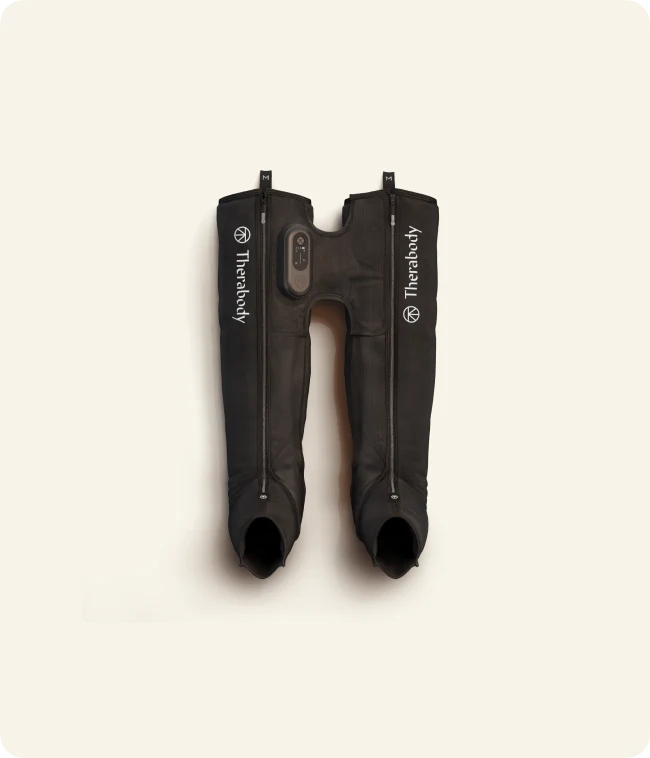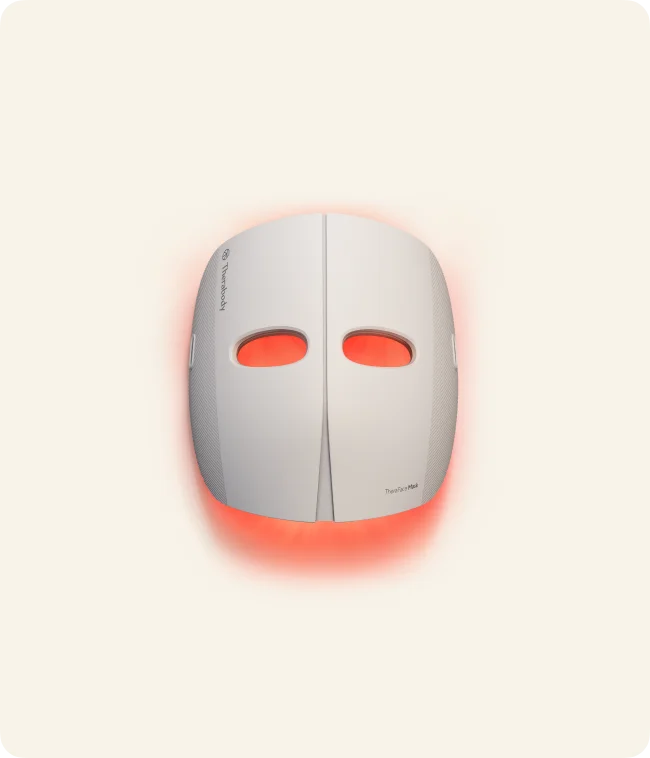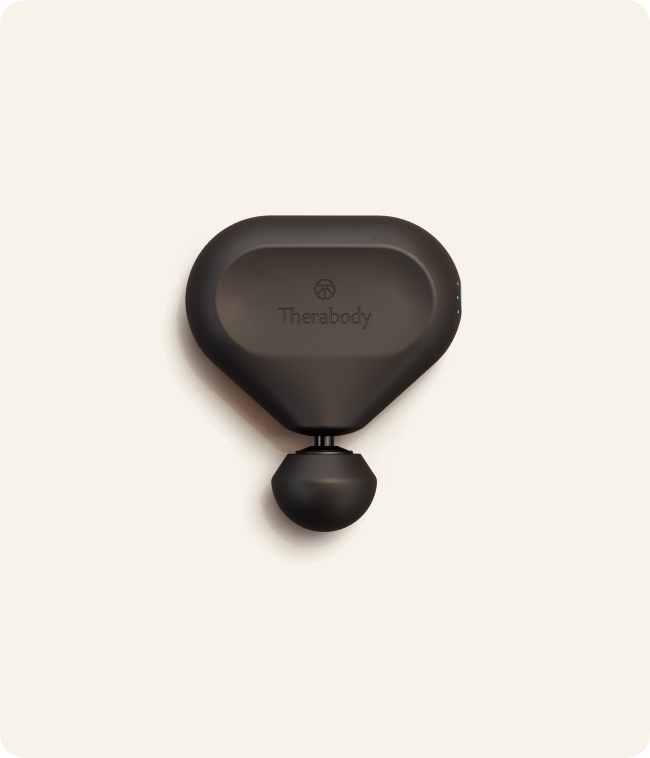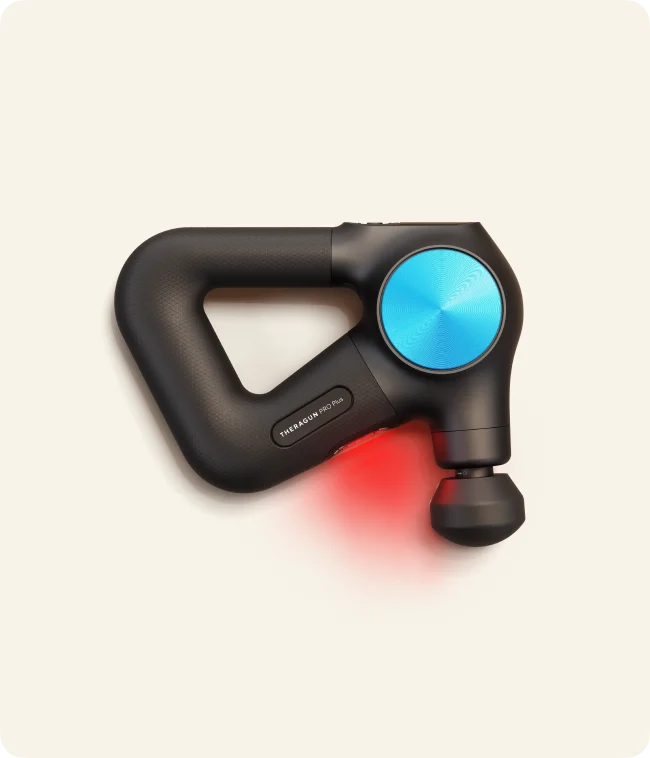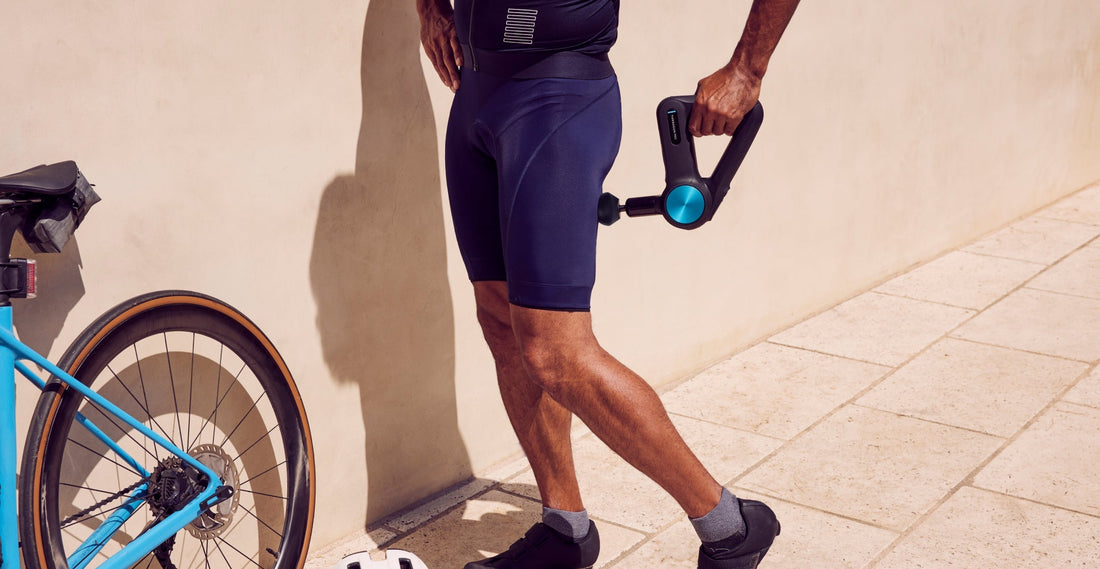
This 4-Minute Massage Gun Protocol is Proven to Increase Lower Body Flexibility
Authors: Lorna Sams, MSc; Dr. Ben Langdown, PhD; Dr. Joan Simons, PhD; Dr. Jitka Vseteckova, PhD
Reviewed by Therabody Scientists: Tim Roberts, MSc; Rachelle Reed, PhD, MS, ACSM-EP; Kyle Silvey, PhD, CSCS; Michelle Darian, MS, MPH, RD, LDN
A groundbreaking study reveals that just three four-minute massage gun sessions per week on each leg can increase hamstring flexibility by 5.8% and calf flexibility by 5.6%.
As massage guns like the Theragun® rise in popularity, it's important to understand their benefits and how to best include them in a warm-up routine to increase flexibility (and subsequent workout performance).
Flexibility can impact more than just your ability to touch your toes — it's integral to everyday life and sports performance. Muscle tightness can make movements difficult or uncomfortable, restricting your ability to carry out daily tasks like picking up groceries, bending down to tie your shoes, or reaching for something on a high or low shelf. Whether your activities include tennis, running sprints, or squats, flexibility impacts how you perform.
Studies show that using a massage gun, even for just a few minutes, can increase flexibility. One study even found that a three-minute treatment had the same effect as five minutes of static stretching. [1] Importantly, studies are now investigating how to use a massage gun to get the most benefit.
Here, we'll dive into The Open University's new study that validates how to use a massage gun to increase lower body flexibility.
Why do people use massage guns?
Athletes and active people alike use massage guns before, during, and after workouts. Massage guns use a therapy called percussive therapy, which uses rapid, concentrated pulses or vibrations to provide a relaxing yet deep massage.
Dozens of studies show that percussive therapy effectively stimulates blood flow, relaxes tight muscles, and promotes overall muscle recovery. They’re also shown to increase flexibility, which is important for performance during a workout. [1, 2, 3]
While studies confirm that using a massage gun as a part of your warm-up or recovery routine helps to improve performance, soreness, and more, using a massage gun effectively is critical to reap the science-backed benefits of the device.
Having a validated massage gun treatment plan for improving lower body flexibility can allow clinicians, athletes, coaches, and the public to target specific improvements in flexibility. [4] This study is a critical step toward understanding the best approach for increasing flexibility using massage guns.
What did the study aim to find?
The Theragun Pro delivered all massage gun treatments during the study.
The study set out to answer three key questions:
- What speed setting on a massage gun increased flexibility the most?
- Is increasing the speed of massage gun treatments more effective than keeping the speed consistent between treatments?
- How many times per week should one use a massage gun?
To answer these questions, the study compared eight different protocols using a variety of speed setting combinations —1750, 2100, and 2400 revolutions per minute (rpm) — and number of applications per week (one, two, or three). [2]
The massage gun treatments focused on four muscle groups (calves, hamstrings, quadriceps, and gluteals), all of which contribute to the flexibility of the hamstrings and calves. Hamstrings and calf flexibility were measured using a digital goniometer before and after all sessions across each week.
How was the study conducted?
A total of 35 healthy adults took part in the study (29 female and 6 male). They weren’t currently experiencing musculoskeletal pain or injuries. The average age of participants was 48 and ranged from 19 to 75.
Researchers developed two main treatment plans, each involving three sessions per week: a consistent speed with a Theragun set at 2100 rpm or an incremental speed where the speed increased between sessions during the week.
Half the participants followed the consistent speed protocol in the first week and the incremental speed protocol in the third week, and vice versa. The second week was a washout period where the participants did not use a Theragun. Participants continued with their normal daily activities and exercise habits throughout the study period.
Eight different treatment plans were measured:
- Plan 1: (Consistent speed) Session 1 - 2100 rpm; Session 2 - 2100 rpm; Session 3 - 2100 rpm
- Plan 2: Session 1 - 2100 rpm
- Plan 3: Session 1 - 2100 rpm; Session 2 - 2100 rpm
- Plan 4: (Incremental speed) Session 1- 1750 rpm; Session 2 - 2100 rpm; Session 3 - 2400 rpm
- Plan 5: Session 1 - 1750 rpm
- Plan 6: Session 1 - 2400 rpm
- Plan 7: Session 1 - 1 750 rpm; Session 2 - 2100 rpm
- Plan 8: Session 1 - 2100 rpm; Session 2 - 2400 rpm
Each session involved participants warming up with pulse raising and mobility exercises followed by flexibility measurements. These flexibility measurements were also repeated at the end of each session. The Theragun PRO was then self-applied with as much force as participants could tolerate without discomfort for 60 seconds to the quadriceps, gluteals, hamstrings, and calves of both legs (see images below).

Using a Theragun increased flexibility
Hamstring flexibility increased in both legs after six of the eight treatment plans. All plans that used a massage gun two or three times per week effectively increased hamstring flexibility.
Calf flexibility increased in five of the eight treatment plans. All sessions that used a massage gun three times effectively increased hamstring flexibility.
So, what plan offered the greatest benefit? Plan 4, which incrementally increased the percussive massage speed across three sessions, offered the biggest gain in flexibility of all the protocols. Here, flexibility increased by 5.8% in the hamstrings and 5.6% in the calves.
The results also showed that using a massage gun was just as effective for increasing flexibility in a participant’s dominant side as their non-dominant side.
It's important to note that participants also felt good after using a massage gun. They reported feeling "energized" or "buzzing" after use, indicating that the experience was effective and enjoyable, which is an essential factor in maintaining a healthy habit.
So, how should someone use a massage gun for flexibility?
The results suggest the most favorable approach for improving lower body flexibility is using a massage gun on both legs for 60 seconds per muscle group three times a week.
Increase the speed of each session across the week from 1750 to 2100 to 2400 rpm, with at least a day of rest in between.
Whether you're tackling everyday activities or aiming for peak athletic performance, increasing flexibility by spending just four minutes using a massage gun three times a week can help.
Key Takeaways:
- This study defines the most effective massage gun protocol for increasing lower body flexibility.
- Lower body flexibility can be improved using a massage gun three times a week, increasing the speed of each session (1750 to 2100 to 2400 rpm) with at least 24 hours between treatments. The Theragun should be applied for 60 seconds to each muscle at a tolerable pressure.
- Integrating this treatment plan into practice will allow practitioners, athletes, coaches, and individuals to target specific improvements in lower body flexibility.
- Researchers may wish to use this proven treatment plant when designing studies, making comparisons across papers and populations more accessible.
Want to learn more? The Open University provides a vast amount of free learning through its OpenLearn platform Sport and Fitness Hub where there are many related topics and other short courses around sport, fitness, and health:
- Recovery strategies in sport and exercise
- The Pain Clinic: Podcast
- Promoting the effective management of children's pain (free course)
- Exploring the psychological aspects of sport injury
- Supporting female performance in sport and fitness
- Exploring issues in women's health
- Sport and fitness courses (qualifications including degree pathways)
References:
- The Effect Of Percussive Therapy On Musculoskeletal Performance And Experiences Of Pain: A Systematic Literature Review
- The Acute Effects of Theragun™ Percussive Therapy on Viscoelastic Tissue Dynamics and Hamstring Group Range of Motion
- Comparison of Interventional Strategies to Improve Recovery after Eccentric Exercise-Induced Muscle Fatigue
- The impact of protocol designs for using massage guns on lower body flexibility: A randomised cross-over design study
